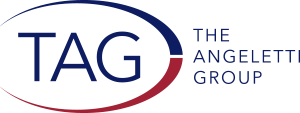How Will Tax Reform Affect Your Philanthropic Revenue in 2018?
With the passing of the nation’s first major tax overhaul in over 30 years, now is a good time to examine what the Tax Reform and Jobs Act of 2017 means for charitable organizations.
At The Angeletti Group (TAG), we urge our current and prospective clients to assess the new law as dispassionately as possible. While this will be challenging with such controversial legislation, it is the best way to keep your team focused in 2018, sure to be a dynamic year for many charities and their donors.
The general consensus from a breadth of analyses is that 2018 charitable giving may decline – some say by as much as $10 to $20 billion, from its peak of nearly $400 billion in 2016. However, most experts also acknowledge there is significant uncertainty given the broad scope of the bill and relatively limited analysis performed by the end of 2017. In addition, the effects may vary widely depending on each charity’s mission, typical donor profile, and communications strategy.
Here are the primary tax changes that TAG believes will affect charities in the coming months:
Increased standard deduction: The new deduction has increased to $24,000 for married couples and $12,000 for individuals. While increased take-home pay at first seems like a plus for charities, there’s a big catch:
Expected reduction in itemizing: The downside of the higher deductions is that millions of Americans will not itemize their deductions next year, giving them no financial incentive to support charities. While over 30% of taxpayers itemized in recent years, analysts expect that figure to drop to 5% – 7% this year, and typically, people who itemize contribute a significant majority of total fundraising dollars. I guess we will learn more about people’s incentives this year and going forward.
Capping of state and local deductions: The new cap of deductions for state and local taxes and real estate taxes at $10,000 will reduce net income for some middle and upper middle-class Americans, primarily in high-tax states such as New Jersey, Connecticut, New York and California.
Changes to estate taxes: The threshold at which heirs must pay taxes on an estate will increase to $11 million for individuals and $22 million for couples. While the majority of analysis to date has focused on a decline in estate donations designed to reduce taxes, it is also likely that some heirs enriched by the tax savings on larger inheritances could give more to charity.
Reduced tax rates for corporations and businesses: The corporate tax rate will drop to 21%, accompanied by sharply lower taxes for smaller businesses such as sole proprietorships, partnerships, and limited-liability companies. While corporations account for less than 5% of total charitable contributions, most companies will have higher net profits and the potential for increased giving. Wealthy individuals in smaller “pass-through” organizations will have greater funds available for charitable support – but watch the phase-out levels which occur at fairly modest levels.
Increased take-home pay for virtually all Americans: Let’s not overlook an obvious implication of the tax bill: the vast majority of taxpayers will see an increase in their net income between 2018 and 2025, when the individual tax cuts are slated to expire. How consumers use that surplus will be determined by which brands and charities offer people the highest perceived value.
Your 2018 Game Plan
As you prepare for a new calendar year and enact your annual or six-month plan, here are five tips to maximize your fundraising success.
Double down on your mission! You know that the vast majority of your donors give out of passion for your work, social commitment, emotion, and the desire to have an impact – not for the tax break. Is your mission crystal clear to your donors and prospects? Is it conveyed consistently across your marketing channels, phone calls, events, and personal visits? If there is a negative effect of the drop in itemizing, we believe donors will stick with the organizations that best align with their values.
Reassess your donor targeting: The new tax law is likely to change the giving habits of certain donor profiles. If your organization works with wealthier individuals, you may find donors in the $5 – $10 million net worth range open to increasing their commitments. While many small contributors will be less affected by the law if they don’t currently itemize, the middle and upper middle class donors who do itemize may be at risk and require more of your attention.
Consider adding a corporate giving program: Only you can determine if businesses are a suitable target for your organization. If you see potential, it is worth testing. Corporations will be reaping significant gains from the new tax law, and some of the more socially conscious may react to a potential backlash by increasing their charitable activity.
Reallocate your resources as needed, e.g. nonprofits that pursue larger donors may choose to personal visits that enable direct contact with higher-wealth prospects.
Ensure you are using communications and marketing best practices: Is your website professional and easy to navigate, and your online giving process seamless? Are you using proven direct response techniques in your list selection, copy approach, and database segmentation? Does your social media presence tell a good story? Do you use fundamental analytics to compare the ROI on your various campaigns? A communications audit can reveal your strengths and opportunities for improvement. If donors are forced to make hard choices in 2018, a poor web page or complex giving process may prove insurmountable.
Will our broader industry see a substantial impact in 2018, or is this much ado about nothing? In any case, TAG is here to support you and your philanthropic strategy We wish you the best in 2018!


